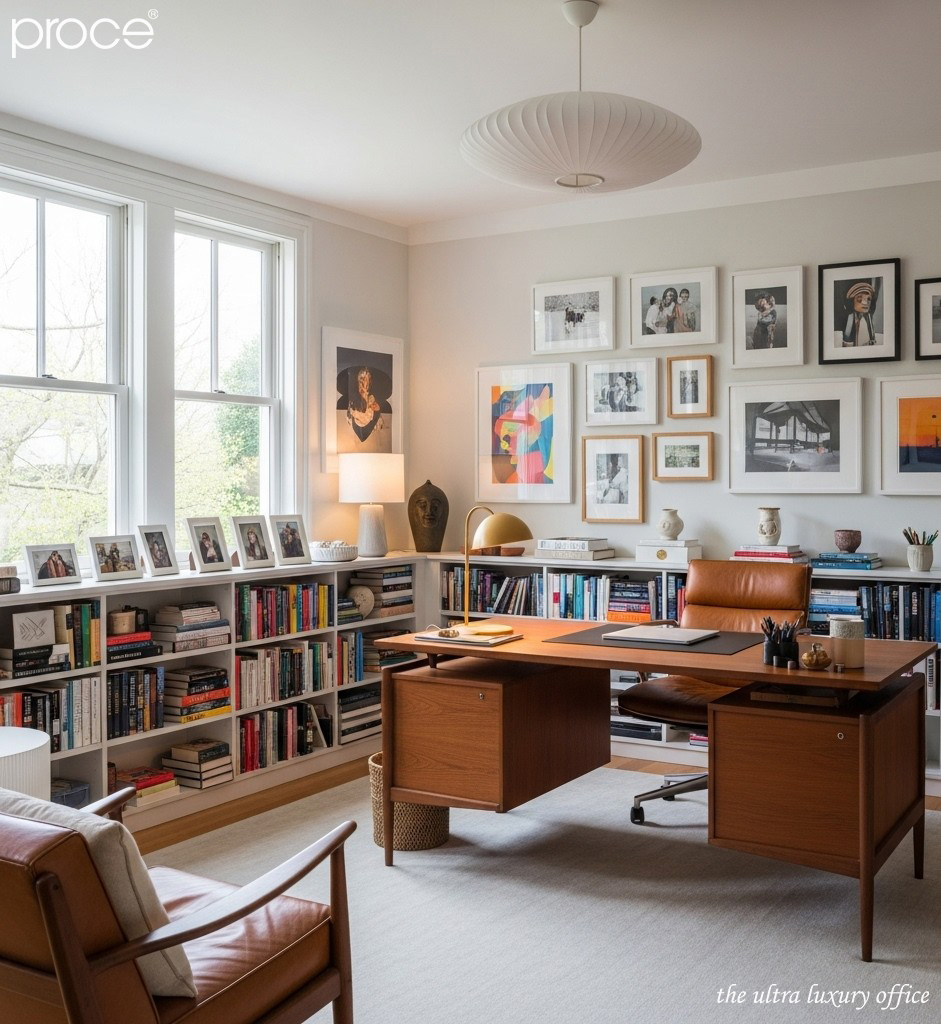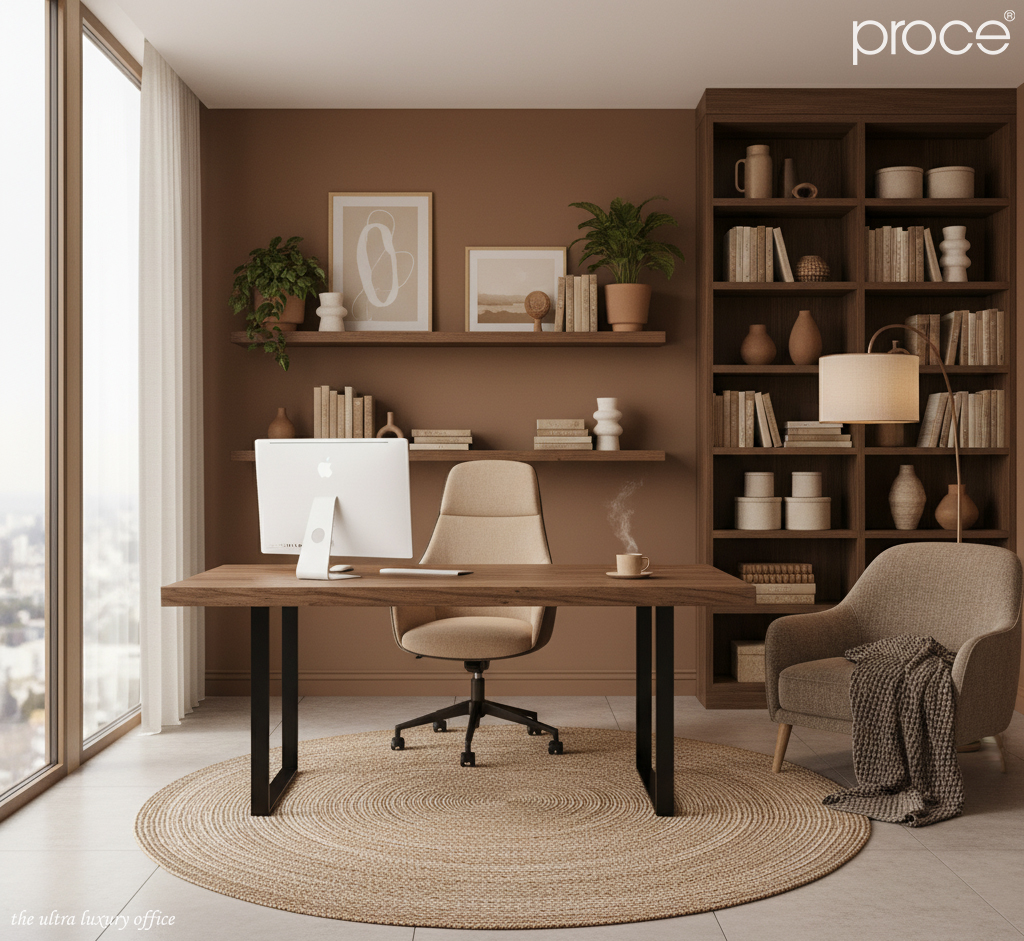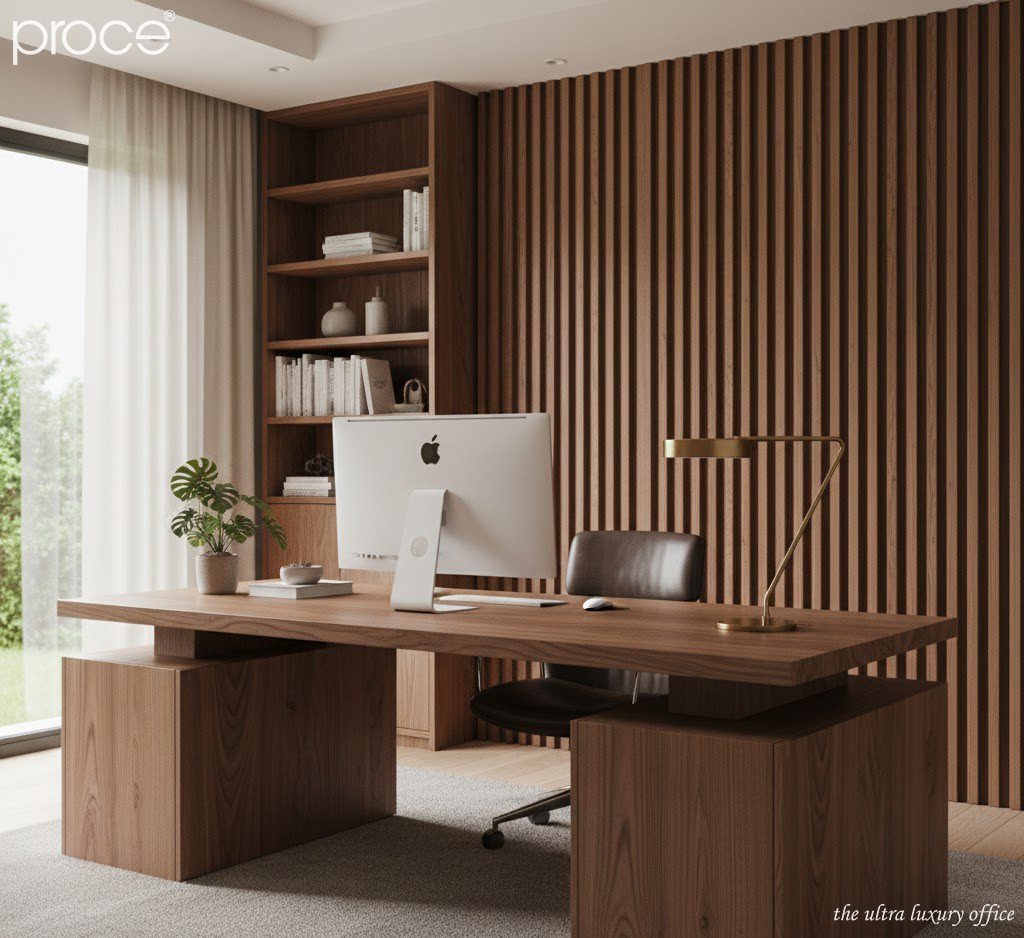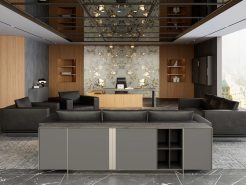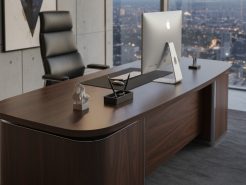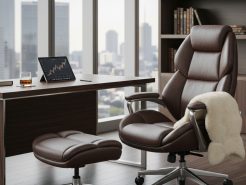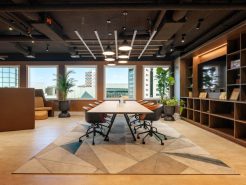HomeOffice is more than just a place to put your computer. It is a space where you need to think, create and concentrate. Echoes from the walls, floors or outside sounds can interrupt every flow of ideas. From a design expert’s perspective. The solution is not just about layout or lighting. It is also about smart sound absorption materials. When you choose the right materials and arrange them properly. You can create a quiet environment. Both aesthetic and comfortable. Where every idea has space to develop, sound is controlled and creativity is free.
1. Basic principles of sound absorbing materials
From the perspective of an acoustic design expert. The basic principle of sound absorption materials is not simply a technical solution. It is also the art of sound control in living and working spaces. Sound absorption, in essence, is the ability to absorb sound, reduce echoes and reverberations inside the room. Create a quiet, pleasant and acoustically clear environment.
This is distinctly different from soundproofing, which aims to prevent outside sound from penetrating. While sound absorption focuses on internal sound treatment. The effectiveness of sound absorption depends on many factors. Such as the material used plays a key role. With density, thickness and surface texture determining the ability to absorb sound at different frequency ranges. The shape and size of the space also directly affect the reflection phenomenon. High ceilings, corners and large flat surfaces can create many echo spots. Requiring sound absorption materials to be strategically placed.
A sophisticated acoustic design strategy often combines a variety of materials with different properties. From foam, cotton fibers, to wood panels or perforated metal. To optimize sound absorption efficiency across the entire frequency range. At the same time, maintain the aesthetics of the space. With a deep understanding of the physical principles and the interaction of sound with materials. Designers can control the rhythm, warmth and clarity of the sound. Turn each space into a sound experience that is both scientific and sophisticated. Balance between function and emotion (2D Design – Error Layout for Home Office).
2. Popular sound absorbing materials for Home Office
Soft Materials – Basic and Flexible Sound Absorption Solution for HomeOffice
In the home office, soft materials are the most popular choice when it comes to reducing echoes. And improving sound quality quickly without having to intervene deeply in the structure. Acoustic foam is a typical example. Lightweight, low cost, easy to install and especially effective in handling mid-high frequencies. Where voices and computer sounds are often concentrated. Although not completely soundproof. However, foam is an effective “shield” to help reduce annoying echoes. Bringing the necessary concentration and privacy.
Fabrics, carpets, thick curtains
For those who love aesthetics. Fabrics, carpets and thick curtains are more ideal choices. They absorb sound well. They also help the room become softer, warmer and more professional. Velvet curtains or thick woven curtains, when arranged to cover almost the entire height of the wall. Not only have the effect of regulating natural light. But also contribute significantly to reducing the echoes reflected from glass surfaces. Which is a common source of echo in the workspace.
In addition, short-pile carpets or soft felts act as a natural sound absorption layer. They help eliminate footsteps and limit background resonance. To achieve optimal sound absorption, experts recommend combining sound-absorbing foam at the main reflection points on the wall, along with thick curtains and carpets. This combination not only significantly improves the acoustic quality, but also brings a warm, sophisticated and harmonious feeling to the HomeOffice space. Where functionality, aesthetics and comfort need to be perfectly balanced.
Absorbent Hard Materials – Combining Aesthetics and Technical Performance
Absorbent hard materials are the choice for those who want to achieve sound absorption efficiency. While maintaining a luxurious and sustainable look for the home office space. Sound absorbing wood is a typical material in this group. The wooden surface is drilled or punched at a certain ratio. Behind is a layer of fiberglass or mineral wool to effectively absorb sound waves. This combination not only helps reduce echoes. But also creates an aesthetic highlight, bringing a warm and professional feeling to the office.
With modern HomeOffice designs, sound-absorbing wood panels can be used as wall panels behind the desk or decorative suspended ceilings. Both increasing the artistry and improving the acoustics of the space. In addition, sound-absorbing tiles or cement panels are also becoming a modern design trend in HomeOffice spaces. With surfaces shaped with patterns or deep grooves. They have the ability to absorb and diffuse sound effectively. These materials not only handle the phenomenon of reverberation well. They also bring a minimalist, industrial style but still sophisticated and luxurious.
When combined with internal acoustic foam, they handle bass frequencies better. An often overlooked factor in small spaces. This is the perfect choice for those looking for a long-term investment. Combining durability, performance and outstanding aesthetics.
Natural and friendly materials – When acoustics blend with green living
In the current trend of HomeOffice design. The combination of acoustic efficiency and environmental sustainability is increasingly concerned. Natural materials such as glass wool, mineral wool, tree fibers, bamboo or natural felt… Not only have the ability to absorb sound effectively. But also create a feeling of closeness and warmth for the working space.
Glass wool and mineral wool are considered the “heart” of most professional sound absorption systems. Thanks to their ability to effectively absorb sound over a wide frequency range. Especially outstanding in the mid and bass ranges. However, they need to be carefully covered with a layer of fabric or a wooden frame. To ensure the safety of the user’s health. For those who love the natural style, bamboo fiber, felt or fabric woven from plant fibers. Will bring a friendly, soft feeling. While still maintaining good sound absorption function.
These materials are often used in wall panels, handcrafted acoustic panels or decorative panels. Although the investment cost may be higher, the aesthetic and emotional effects they bring are worth it. They help the workspace become more relaxing, harmonious and inspiring. An important factor in improving creative performance at HomeOffice.
New and innovative materials – Modern sound absorption solutions for HomeOffice spaces
The development of material technology has opened a new era for sound absorption design in HomeOffice. Sound absorption panels made from recycled plastic or bio-composite. Are becoming the top choice thanks to their outstanding advantages in aesthetics, durability and environmental friendliness. Not only do they absorb sound effectively. These panels also have a rich surface shape. From 3D curved, wavy patterns to simulating stone and wood materials. Help turn a monotonous wall into a vivid work of art.
In addition, sound-absorbing materials combined with decoration such as art panels, 3D sound-absorbing paintings or modular wall frames… are all materials that have both visual value and sophisticated acoustic treatment. The notable point is that they are easy to disassemble, clean and change the layout. Suitable for the flexibility of modern HomeOffice. For those who work in creative fields or often have online meetings. This new type of sound-absorbing material not only brings clear sound quality. But also shows personal aesthetic taste. This is proof of the trend of “aesthetic acoustics”. Where technology, design and lifestyle perfectly intersect. (What do Genz want in a HomeOffice?).
3. Principles for choosing sound-absorbing materials for HomeOffice
From the perspective of an acoustic design expert. Choosing sound absorbing materials for HomeOffice is not just a technical issue. It is also a delicate combination of acoustic, aesthetic and lifestyle needs. First of all, it is necessary to clearly define the sound treatment goal. If the problem comes from external noise such as vehicles or neighbors. The appropriate solution is soundproofing with materials that can prevent sound transmission.
On the contrary, if the echo and reverberation in the room make the space uncomfortable. We need sound-absorbing materials to absorb and soften the sound inside. Once the nature of the problem has been correctly identified, the next step is to combine the layers of materials scientifically. A common formula is to use fabric or felt on the outside. Combine glass wool or mineral wool inside. And finish with perforated wood panels to both increase absorption efficiency. And ensure the aesthetics of the space.
In addition, the installation location also plays an important role. Priority should be given to highly reflective surfaces such as the wall opposite the desk. The ceiling or the corners of the room where sound is likely to resonate. Finally, aesthetic and budget factors also need to be carefully considered. Choosing materials that match the interior style. Not only helps maintain design harmony. But also helps optimize investment costs. An effective soundproof HomeOffice space is always where sound, light and emotions blend together. Creating a quiet, sophisticated and inspiring working environment every day.
4. Notes when designing soundproof HomeOffice
When designing a soundproof HomeOffice space, it is important not only to choose the right materials. It is also important to know how to balance the acoustic efficiency and the comfortable, natural feeling in the room. A common mistake is to install sound-absorbing materials too densely. This causes the sound to be completely “absorbed”, making the room heavy and lifeless. Good acoustics is the harmony between absorption and reflection just enough. So that the voice is still clear, natural and not “dead” sound.
In addition to specialized materials, design experts often recommend combining biological elements and soft furnishings to create a natural sound-absorbing effect. Broad-leafed green plants, fabric sofas, felt chairs, thick curtains or carpets… are all elements that help reduce echoes in the space. And also bring a feeling of relaxation and friendliness.
In addition, testing and fine-tuning the sound absorption efficiency is an indispensable step. A simple test such as talking, recording. Or measuring the dB level before and after installation, will help accurately assess the level of acoustic improvement. From there, you can adjust, arrange, add or reduce materials accordingly. Finally, an ideal HomeOffice is where the sound is subtly controlled. Both quiet and natural, creating an effective and inspiring working space. (What customers say after 3 months of HomeOffice delivery).
=====\
PROCE – GIẢI PHÁP TỔNG THỂ CHO VĂN PHÒNG HẠNG SANG
Website: https://proce.vn/
Youtube: https://www.youtube.com/@noithatvanphonghangsang
Fanpage: https://www.facebook.com/vanphongnhapkhauProce
GG Business: https://business.google.com/dashboard/l/15115233216900975876
Linkedin: https://www.linkedin.com/company/74359718/admin/
Hotline: 090.115.6767
#home_office; #phong_lam_viec_tai_nha; #noi_that_home_office
#thiet_ke_home_office; #thiet_ke_noi_that_home_office
#home_office_sang_tao; #derco_home_office; #home_office_dep


